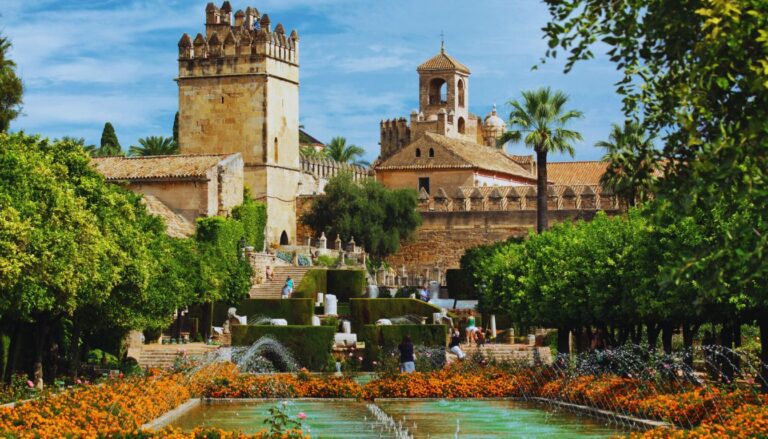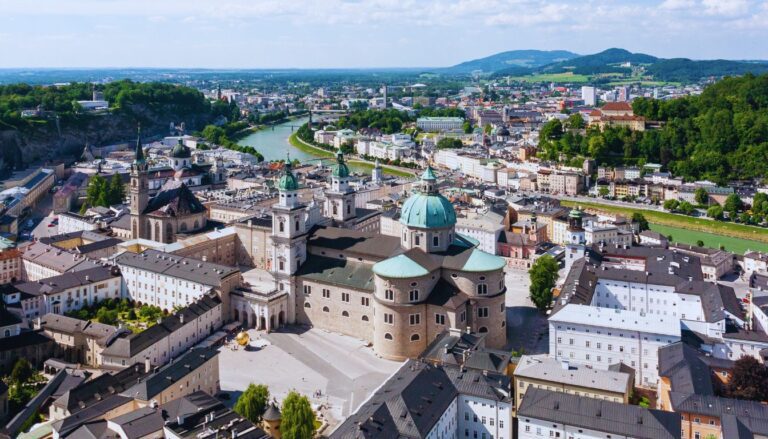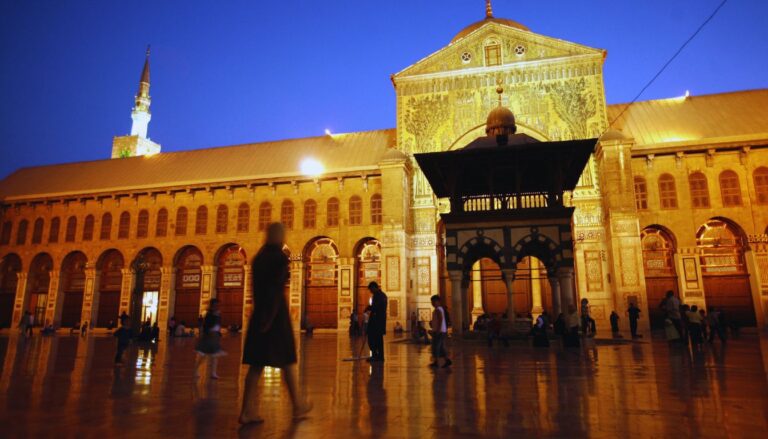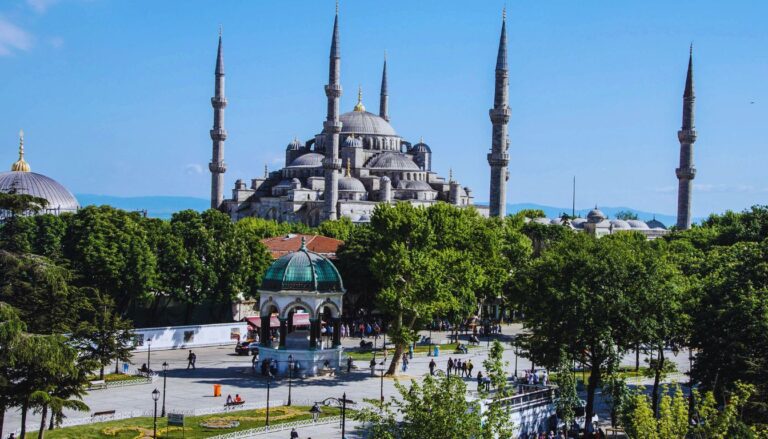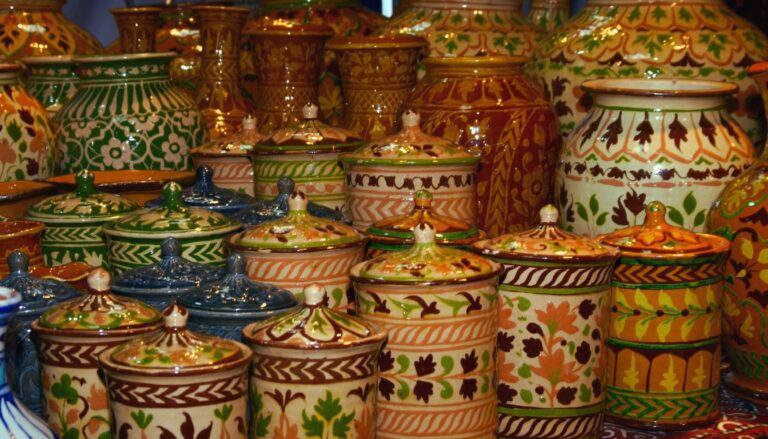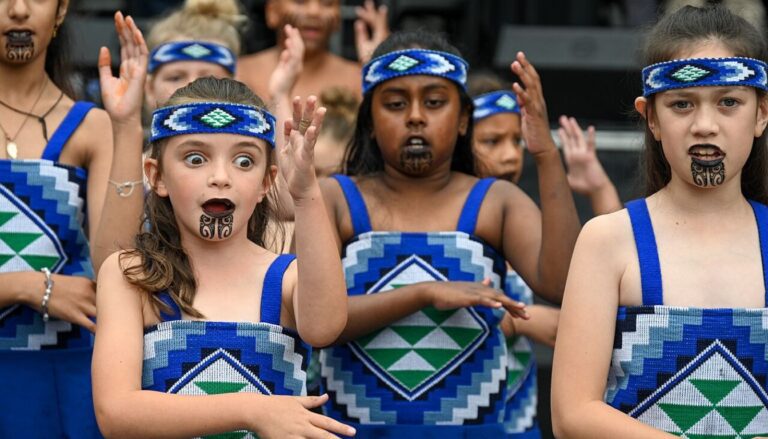Across the vast expanse of the Sahara Desert, a group of nomadic people have carved out a unique way of life that has endured for centuries. These are the Tuareg, often referred to as the “Blue People” of the desert. Their name evokes images of mysterious, indigo-clad figures moving silently across golden dunes, their faces partially obscured by traditional veils.
The Tuareg are not confined to a single country but are spread across several nations in North and West Africa. Their traditional homeland spans a wide area, including parts of Niger, Mali, Algeria, Libya, and Burkina Faso. This vast territory, predominantly within the Sahara and Sahel regions, has shaped their culture and lifestyle in profound ways.
Known for their resilience and adaptability, the Tuareg have played a significant role in the history and culture of North Africa. As skilled traders and navigators of the desert, they have long been crucial to trans-Saharan commerce, acting as intermediaries between the Mediterranean world and sub-Saharan Africa. Their influence on the region’s cultural landscape is as deep as the Sahara itself, leaving an indelible mark on the art, music, and traditions of North Africa.
Table of Contents
Historical Background of the Tuareg
The origins of the Tuareg people can be traced back thousands of years, rooted in the complex history of North Africa. Ethnically, they are classified as Berbers, an indigenous group that has inhabited the region since ancient times. The term “Tuareg” is actually an Arabic designation; they call themselves “Imohag,” “Imajaghan,” or “Imashaghen,” depending on the region and dialect, all of which mean “free people.”
The early history of the Tuareg is intertwined with the rise and fall of great African empires. As early as the 5th century BCE, the ancient Greeks recorded encounters with nomadic Berber peoples in the Sahara. Over time, these nomads developed into distinct groups, with the Tuareg emerging as masters of the central Saharan trade routes.
Their migration patterns and territorial expansions were influenced by various factors, including climate changes and economic opportunities. The introduction of the camel to North Africa around 300 CE revolutionized their way of life, allowing them to traverse greater distances and establish control over key trans-Saharan trade routes.
Throughout the medieval period, the Tuareg played a crucial role in the trade networks that connected sub-Saharan Africa with the Mediterranean world. They transported gold, salt, and other valuable commodities across the desert, contributing to the wealth and cultural exchange of empires such as Ghana, Mali, and Songhai.
The arrival of Islam in North Africa during the 7th century CE had a profound impact on Tuareg society. While they adopted Islam, they also maintained many pre-Islamic traditions, creating a unique blend of beliefs and practices that characterize their culture to this day.
The Blue People: Origin and Significance of Indigo-Dyed Clothing
One of the most striking aspects of Tuareg culture is their distinctive indigo-dyed clothing, which has earned them the moniker “Blue People.” This nickname isn’t just poetic; it’s rooted in the very real blue tint that the indigo dye leaves on their skin.
The process of dyeing cloth with indigo is an ancient art among the Tuareg. The deep blue color is obtained from the leaves of the indigo plant (Indigofera tinctoria), which grows in the southern regions of their territory. The dyeing process is labor-intensive and requires great skill. Cloth is repeatedly dipped in vats of dye and left to dry in the sun, building up layers of color until the desired deep blue is achieved.
The significance of the blue clothing goes beyond mere aesthetics. In the harsh desert environment, the indigo-dyed garments serve practical purposes. The dark color absorbs heat, paradoxically helping to keep the wearer cool in the scorching Saharan sun. The dye also acts as a natural insect repellent and offers some protection against the abrasive desert winds and sand.
Moreover, the blue garments hold deep cultural and social significance. The intensity of the blue in a person’s clothing often indicates their social status and wealth. The most prized garments are those that leave a blue tinge on the skin, a mark of distinction known as “kokolle” in the Tuareg language.
Central to the Tuareg’s blue attire is the tagelmust, a turban-veil worn by men. This garment not only protects from the sun and sand but also holds social importance. The way a man wraps his tagelmust can indicate his region of origin, and the act of covering the mouth and nose with it is a sign of respect in Tuareg society.
The blue clothing of the Tuareg has become an iconic symbol of their culture, representing their resilience, adaptability, and the unique beauty they have cultivated in one of the world’s most challenging environments.
Tuareg Social Structure and Family Life
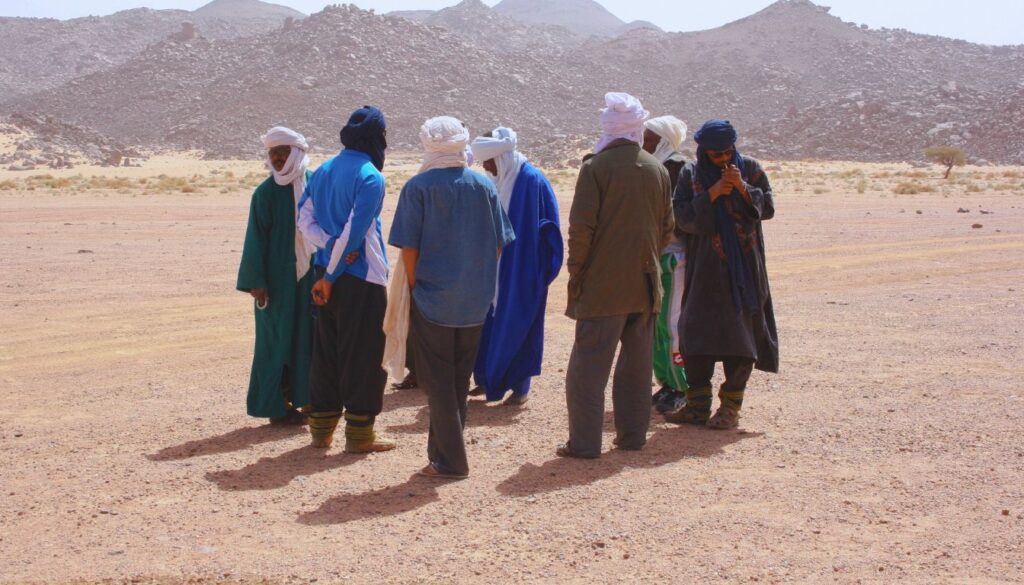
Tuareg society is characterized by a complex social structure that sets it apart from many other cultures in the region. One of its most distinctive features is its matrilineal aspects, which grant women a level of status and independence unusual in many traditional Islamic societies.
In Tuareg culture, lineage and inheritance are typically traced through the maternal line. This matrilineal system means that property, animals, and even tents are often passed down from mother to daughter. Women generally own the family’s main tent and have significant control over household decisions.
Despite these matrilineal elements, Tuareg society is not matriarchal in the strict sense. Men still hold considerable power, particularly in political and religious spheres. The society is structured into several social classes, including nobles, vassals, religious leaders, artisans, and others.
Marriage customs among the Tuareg are unique in several ways. Monogamy is the norm, unlike in many other Islamic societies where polygamy is practiced. Divorce is relatively common and socially acceptable, with women often retaining custody of children and property.
A notable aspect of Tuareg family life is the practice of “ahal,” a kind of courtship ritual where young men and women gather at night to socialize, recite poetry, and play music. This custom allows for mixing between the sexes in a society that otherwise maintains some degree of gender segregation.
Family bonds are strong in Tuareg society, with extended family units often living and traveling together. Children are raised communally to some extent, with aunts and uncles playing significant roles in their upbringing.
The traditional nomadic lifestyle has shaped family dynamics, with responsibilities divided to ensure survival in the harsh desert environment. Men typically handle tasks such as herding, trading, and providing security, while women manage the household, including setting up and dismantling camps during migrations.
In recent years, modernization and sedentarization have brought changes to traditional Tuareg family structures. Many Tuareg now live in towns and cities, adapting their customs to urban life while striving to maintain their cultural identity.
Nomadic Lifestyle: Adapting to the Harsh Saharan Environment
The Tuareg have long been renowned for their nomadic lifestyle, a way of life intricately adapted to the harsh realities of the Sahara Desert. Their traditional patterns of movement are not random wanderings, but carefully planned migrations that follow the rhythms of the desert.
Historically, Tuareg nomadism was driven by the need to find water and grazing lands for their livestock, primarily goats, sheep, and camels. These migrations followed a seasonal pattern:
- During the hot, dry summer months (May to September), they would move northward to areas with more vegetation.
- In the cooler winter months (October to April), they would return south to avoid the cold desert nights and take advantage of southern pastures.
This nomadic cycle required an intimate knowledge of the desert landscape, including the location of oases, seasonal water sources, and grazing areas. The Tuareg developed an impressive array of survival techniques to thrive in this unforgiving environment:
- Water management: They became experts at finding and conserving water, using techniques like digging wells and storing water in leather bags.
- Dietary adaptation: Their diet included nutrient-rich foods that could be preserved, such as dates, dried meat, and milk products from their livestock.
- Shelter: The traditional Tuareg tent, known as an “ehan” or “ehen,” is designed to be easily dismantled and transported. Made of leather or woven mats, it provides shelter from the sun and sandstorms.
- Navigation: The Tuareg developed exceptional navigation skills, using the stars, wind patterns, and landscape features to guide their travels.
- Clothing: Their distinctive indigo-dyed clothing, as discussed earlier, serves both practical and cultural purposes in the desert environment.
In recent decades, the traditional nomadic lifestyle of the Tuareg has faced significant changes due to various environmental and social factors. Many Tuareg have adopted a more sedentary lifestyle, settling in towns and cities. However, the spirit of nomadism remains an integral part of Tuareg identity. Many maintain a semi-nomadic lifestyle, moving seasonally between fixed settlements. Others have adapted their nomadic skills to new economic opportunities, such as leading desert tours for tourists or engaging in long-distance trade using modern transportation.
Tuareg Art and Craftsmanship
The Tuareg are renowned for their exquisite craftsmanship, which reflects both the aesthetic sensibilities and practical needs of their nomadic lifestyle. Their art is not merely decorative but often serves functional purposes, embodying the Tuareg philosophy of beauty in utility.
Jewelry and Metalwork
Tuareg jewelry is perhaps their most famous art form. Crafted primarily from silver, Tuareg jewelry is known for its intricate designs and symbolic meanings. Common motifs include:
- The cross of Agadez (Croix d’Agadez): A distinctive cross shape that serves as a symbol of the Tuareg people.
- Geometric patterns: Often representing elements of nature or cultural concepts.
- Protective amulets: Designed to ward off evil spirits or bring good fortune.
The creation of jewelry is traditionally the domain of the Inadan, the artisan class within Tuareg society. These skilled craftsmen use techniques passed down through generations, including lost-wax casting and hand-engraving.
Leather Crafts
Given the abundance of livestock in their nomadic lifestyle, leatherwork is another significant aspect of Tuareg craftsmanship. Leather items are both practical and decorative, including bags, pouches, saddles, and decorative items for the home.
Contemporary Tuareg Art
While traditional crafts remain important, contemporary Tuareg artists have also embraced modern forms of expression. This includes painting, sculpture, and modern interpretations of traditional designs. Tuareg music, often referred to as “desert blues,” has gained international recognition, with artists blending traditional sounds with modern influences.
Language and Writing: The Tifinagh Script
The Tuareg language, known as Tamasheq (also called Tamahaq, Tamashek, or Tafughist, depending on the region), is a member of the Berber branch of the Afroasiatic language family. It’s spoken by approximately 1.2 million people across several countries in North and West Africa.
One of the most fascinating aspects of the Tuareg language is its unique writing system, known as Tifinagh. The Tifinagh script is one of the oldest writing systems in the world still in use today, with roots tracing back to ancient Libyan and Phoenician scripts.
Key features of the Tifinagh script include:
- Alphabet: It consists of 25 letters, primarily representing consonants. Vowels are typically omitted in writing, similar to Arabic and Hebrew scripts.
- Direction: Traditionally, Tifinagh could be written in various directions – left to right, right to left, or even vertically. Modern usage tends to favor left-to-right orientation.
- Geometric shapes: The letters are composed of simple geometric shapes, making them well-suited for carving into rock or leather.
Historically, the use of Tifinagh was not widespread among all Tuareg. It was often the domain of women, who used it for personal communications and poetry. Men, who were more likely to engage in trade and religious studies, often used Arabic script instead.
In recent decades, there have been efforts to revive and standardize the use of Tifinagh. This has led to increased use in education and public signage in some areas. However, the preservation of both the Tamasheq language and the Tifinagh script faces challenges due to the spread of national languages and the changing lifestyles of many Tuareg.
Traditional Tuareg Music and Festivals
Music plays a central role in Tuareg culture, serving as a means of cultural expression, social bonding, and historical preservation. Traditional Tuareg music is deeply intertwined with their nomadic lifestyle and rich oral traditions.
Musical Instruments
The Tuareg use a variety of traditional instruments in their music:
- Imzad: A single-stringed fiddle played exclusively by women. It’s so important to Tuareg culture that it’s been recognized by UNESCO as Intangible Cultural Heritage.
- Tende: A drum made from a mortar covered with goatskin, often played by women during celebrations.
- Tahardent: A three-stringed lute similar to the ngoni, traditionally played by men.
Musical Styles and Themes
Tuareg music often focuses on themes of nostalgia, love, and the beauty of the desert. It also serves as a repository for oral history, with songs recounting important events and legendary figures in Tuareg history.
In recent decades, a new genre known as “desert blues” or “Ishumar music” has emerged. This style blends traditional Tuareg melodies with modern guitar-based rock and blues, bringing Tuareg music to international audiences.
Festivals
Festivals are an important part of Tuareg social life, providing opportunities for music, dance, and community bonding. These gatherings often feature traditional music performances, camel races, and displays of Tuareg craftsmanship. Such festivals not only celebrate Tuareg culture but also provide economic opportunities through tourism and craft sales.
The Role of Camels in Tuareg Culture
Camels have been integral to Tuareg life for centuries, playing a crucial role in their nomadic lifestyle, economy, and cultural identity.
Historical Importance
The introduction of camels to North Africa around 300 CE revolutionized life in the Sahara. For the Tuareg, camels became essential for:
- Transportation: Allowing long-distance travel across the desert.
- Trade: Enabling the Tuareg to participate in trans-Saharan trade routes.
- Survival: Providing milk, meat, and materials for clothing and shelter.
Camel Husbandry
The Tuareg have developed sophisticated techniques for camel husbandry, including:
- Breeding practices to develop camels suited for different purposes (riding, carrying loads, milk production).
- Knowledge of desert plants that serve as camel fodder.
- Traditional veterinary practices for maintaining camel health.
Symbolic Value
In Tuareg society, camels are more than just utilitarian animals. They hold significant symbolic value:
- Status Symbol: Owning many high-quality camels is a sign of wealth and prestige.
- Dowry: Camels often form part of the bride price in traditional marriages.
- Poetry and Art: Camels frequently feature in Tuareg poetry and visual arts, symbolizing beauty, endurance, and freedom.
Modern Changes
While camels remain important, their role has evolved in modern times:
- Some Tuareg use camels for tourism, offering desert treks to visitors.
- In more settled communities, camels are sometimes replaced by motorized vehicles for transportation.
- Efforts are being made to develop camel milk and meat industries as economic opportunities for Tuareg communities.
Despite these changes, the camel remains a powerful symbol of Tuareg identity and their connection to the desert.
Challenges and Adaptations in the Modern Era
The Tuareg people face numerous challenges in the 21st century, as their traditional way of life encounters modern realities.
Environmental Changes
The Sahara and Sahel regions are experiencing environmental shifts, which affect the Tuareg in several ways:
- Changes in rainfall patterns can disrupt traditional migration routes and grazing lands.
- Desertification poses challenges to pastoral livelihoods.
These environmental changes are prompting many Tuareg to adapt their traditional practices or seek alternative livelihoods.
Economic Transitions
Traditional Tuareg economic activities are evolving in response to modern circumstances:
- Decline of Traditional Trade: Once controllers of vital trade routes, many Tuareg are now exploring new economic opportunities.
- Urbanization: Many Tuareg, especially younger generations, are moving to cities in search of education and employment.
- Tourism and Crafts: Some Tuareg communities are leveraging their cultural heritage for economic opportunities in tourism and international craft markets.
Cultural Preservation
As more Tuareg settle in urban areas or adopt sedentary lifestyles, maintaining cultural traditions becomes both a challenge and a priority:
- Language: Efforts are being made to preserve and promote the Tamasheq language in the face of dominant national languages.
- Traditional Skills: There’s a growing focus on documenting and passing down traditional skills like navigation, craftsmanship, and camel husbandry.
- Cultural Identity: Many Tuareg are finding ways to adapt their cultural practices to modern contexts while maintaining their unique identity.
Tuareg Influence on Saharan Tourism and Economy
In recent decades, the Tuareg have found new economic opportunities through tourism, leveraging their deep knowledge of the Sahara and their rich cultural heritage.
Desert Tourism
Tuareg guides are highly sought after for Saharan expeditions:
- Camel Treks: Offering tourists authentic desert experiences.
- 4×4 Tours: Guiding visitors to remote desert locations.
- Cultural Tours: Providing insights into traditional Tuareg life and customs.
Handicraft Industry
Tuareg crafts have gained popularity in international markets:
- Jewelry: Silver Tuareg jewelry is prized by collectors worldwide.
- Leather Goods: Traditional leather crafts adapted for modern markets.
- Textiles: Indigo-dyed fabrics and traditional Tuareg designs used in fashion and home decor.
Festivals and Cultural Events
Events celebrating Tuareg culture attract both domestic and international tourists:
- Music Festivals: Showcasing traditional and modern Tuareg music.
- Craft Fairs: Providing a marketplace for Tuareg artisans.
These tourism-related activities offer a way for the Tuareg to participate in the modern economy while maintaining connections to their cultural heritage.
Conclusion: The Future of Tuareg Culture in a Changing World
The Tuareg people, with their rich history and unique culture, stand at a crossroads in the 21st century. Facing challenges from environmental changes and rapid modernization, the resilience that has sustained them for centuries is being tested as never before.
Yet, the story of the Tuareg is not one of decline, but of adaptation and evolution. Throughout their history, the Tuareg have demonstrated a remarkable ability to adapt to changing circumstances while maintaining their core cultural identity.
Key points to consider about the future of Tuareg culture include:
- Cultural Preservation: Efforts are underway to document and preserve Tuareg language, music, and traditional knowledge. Digital technologies offer new ways to record and share cultural heritage.
- Economic Adaptation: Many Tuareg are finding ways to translate traditional skills into modern economic opportunities, from tourism to international craft markets.
- Environmental Stewardship: Tuareg knowledge of desert ecosystems could prove valuable in addressing environmental challenges in the Sahara and Sahel regions.
- Global Connections: Through music, art, and digital media, Tuareg culture is reaching global audiences, fostering understanding and appreciation.
The future of Tuareg culture will likely be a blend of tradition and innovation. While some aspects of traditional nomadic life may become less common, the core values, artistic expressions, and unique worldview of the Tuareg have the potential to not only survive but thrive in new forms.
As the “Blue People” navigate the complexities of the modern world, their journey offers valuable lessons in resilience, adaptability, and the enduring power of cultural identity. The Tuareg story is far from over; instead, a new chapter is being written, one that honors the past while embracing the possibilities of the future.
In a world grappling with issues of cultural diversity, environmental sustainability, and social change, the experiences and wisdom of the Tuareg people have much to contribute to global conversations. Their ongoing story serves as a testament to the resilience of human cultures and the enduring allure of the desert and its people.
Discover the must-visit cultural destinations of Tuareg culture



